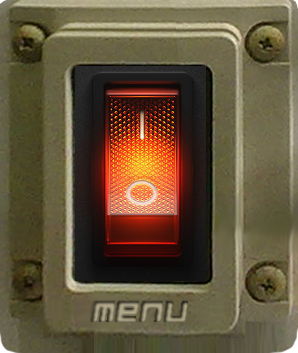
Making true holograms
for over 45 years.

A new space, new look and new ways to get involved!


Holographic Studios is the world’s longest operating gallery and laboratory of holography.
Going into our fifth decade,
we are preparing for a big metamorphosis!




History
apprentice and mentee of over 4 years, Sy Rivers, to continue the next generationof the beloved studio.
In this new chapter,
our founder will be
shifting into the position of Holographer Emeritus, leaving his
_edited.png)
Since 1979, we have displayed holograms in our historic midtown Manhattan gallery, produced custom holography, and taught classes in our subterranean laboratory below. We will continue to exhibit, create and provide education on holographic and laser art from our new space in the Lower East Side



Founded by one of the
original pioneers of
holography Jason Sapan
(aka Dr. Laser),
Holographic
Studios is a world
leader in display
holography.

Holographic Studios is named the Number One Obscure Museum in America and has been featured in the New York Times, Smithsonian, Business Insider, PBS, The New Yorker, GIZMODO, and more.

Many of the world’s leading museums, corporations, institutions, artists and celebrities have worked with Holographic Studios to create visually striking three dimensional hologram projects. Our team is ready to guide you through any hologram technology or art project, large or small.
Reach out today!

FAQs

Holography is the science of capturing three dimensional images (also known as Holograms) without a lens using laser light.

A hologram is a photograph of three dimensional impressions that are on the surface of light waves known as light wave interference. There are two main types: reflection (where the hologram reflects light to create a three dimensional image) and transmission (where light shines through the hologram to create a three dimensional image).

LASER stands for Light Amplification through Stimulated Emission of Radiation. It is a device which produces a concentrated beam of light by stimulating atoms or molecules to emit light at particular wavelengths. There are several types of lasers including gas lasers, diode lasers and pulse lasers, which are all used for holography.

In physics, interference is when two or more electromagnetic waveforms combine to form a resulting wave which either adds to, subtracts from or cancels out the amplitude (“height” of the wave).

The preferred word is Hologram!
A Holograph is a handwritten document, a Holographer is someone who makes holograms, Holography is the word for the technology and artform, and a Holographer is someone who produces Holograms. According to Isaac Asimov, a Holographist is a person who collects or studies holography but does not make them. All things pertaining to holography are referred to as Holographic.

No, holograms are not projected. They are simply pieces of clear film which, when filled with light (like plaster would fill up a cast), display a true 3D image. Technically, they are reconstructions of the light that was reflected off the original subject. Pretty cool right?

That was not a hologram, but rather an optical illusion involving projection and reflection known as a Pepper’s Ghost. We are highly skilled and experienced in creating these as well.

The answer depends on who you ask!
Light wave interference photographs (the predecessor to holograms) were presented by Gabriel Lippman in 1894 based on a theory he went on to win a Nobel Prize for in 1908. He also became the head of Physics at the Sorbonne and was the thesis advisor to Marie Curie, another Nobel prize winner who pioneered research on radioactivity.
In 1915, Dennis Gabor began to study Lippman’s theories of diffraction as a teenager in Hungary until he fled to England in 1933 due to the war. There, research on improving electron microscopes led him to serendipitously discover his theory of wavefront reconstruction which he named “holography” based on the Greek words holos (whole) and graphe (message) and won a Nobel Prize for in 1971.
Meanwhile in the Soviet Union, Yuri Denisyuk was also reading Lippman’s theories of interference photography and realized it could be used to create three dimensional images. In 1958 he produced the first three dimensional reflection holograms using a highly filtered mercury tube, since the laser did not yet exist. He published this work in 1962.
Without knowing of Gabor or Denisyuk, Emmet Leith reinvented holography by discovering the Helium-Neon laser with his assistant Juris Upatniks in 1958 and it’s applications in three dimensional transmission holography, which he published in 1961.
Learn more about the history of holography here.





















